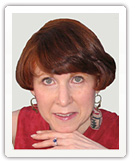Articles: Multi-Generational Solutions Archives
Achieving Inter-Generational Harmony
Selected excerpts from: "Generations Gap Between Workers Narrows if Company Is Proactive"
by Barbara Frankel
"People have different goals at different stages of their life cycles," Pitney Bowes Vice President and Chief Personnel Officer Joanna Torsone said. "We examine how people view work, how they want to work, how they maximize that work, and we try to help people understand the differences."
For example, Pre-Boomers are respectful of authority and corporate hierarchies, while Boomers have a "love/hate relationship with authority," stated Carolyn Ince Dugan, a partner at GenCom consultants. Generation Xers believe in leading through competence and are unimpressed with authority, while Netters, born after 1980, are independent and prefer an "unconventional style of leadership."
The groups also have different views of money, which could affect many professional and personal decisions. Pre-Boomers, born in the Depression, are financially conservative and prefer saving and paying cash. Boomers are of the buy now, pay later school of finance. Generation Xers want financial rewards for all efforts while Netters, until recently, have never seen an economic downturn.
The average age of the U.S. workforce is now 35.2, and is projected to be 38 by 2050, according to the U.S. Census Bureau. The company also will have to address, more and more frequently, as Boomers age, how younger people can manage those older than themselves.
Knowing all this, what does a company like Pitney Bowes do to create generational harmony?
Improve communications, change organizational structure, and help managers best understand those who work for them, no matter what generation, according to Torsone. Among their efforts: Incorporating an intergenerational element of diversity into the LEAD program, companywide training for leaders. A role-playing group, for example, was used with senior executives to get the point across about how different generations react and interact.
Additionally, Pitney Bowes uses its Intranet to communicate with the different generations. That includes allowing employees of all ages and ranks to ask Chairman and CEO Michael J. Critelli questions online - and get direct answers from him.
Critelli is a strong advocate of intergenerational diversity. "First and foremost, we recognize the need to focus on these generational issues, and that, as we do so at Pitney Bowes, we are building on a strong history of valuing diversity. And we must send a message to existing and prospective employees that we will do what it takes to address this latest challenge," he said in an address to human-resources professionals. Critelli also proposed Pitney Bowes and other corporations "create a more fun working environment that is more attuned to the needs of our incoming generations." We want managers to find ways to build teamwork and make the atmosphere fun.
"Managing across diverse multigenerations requires maximizing the strengths of the people who work for you. It's the ability to really understand what makes an individual who that person is, what motivates them – that's not just about age." said Torsone.
© 2001 DiversityInc.com, April 6, 2001

